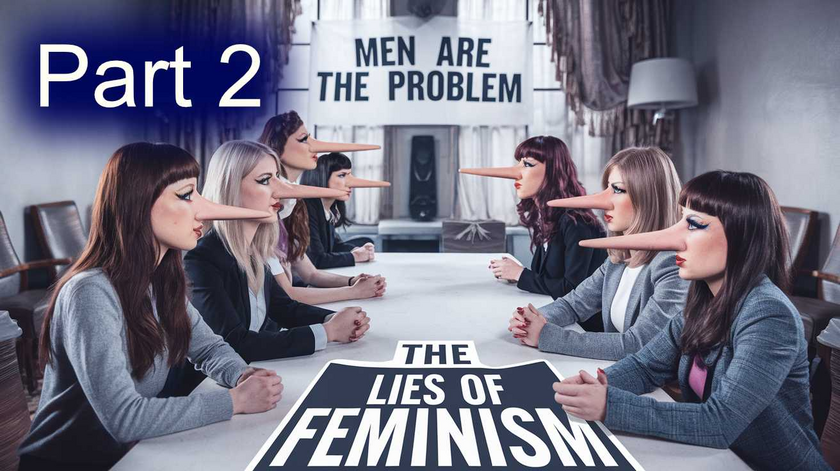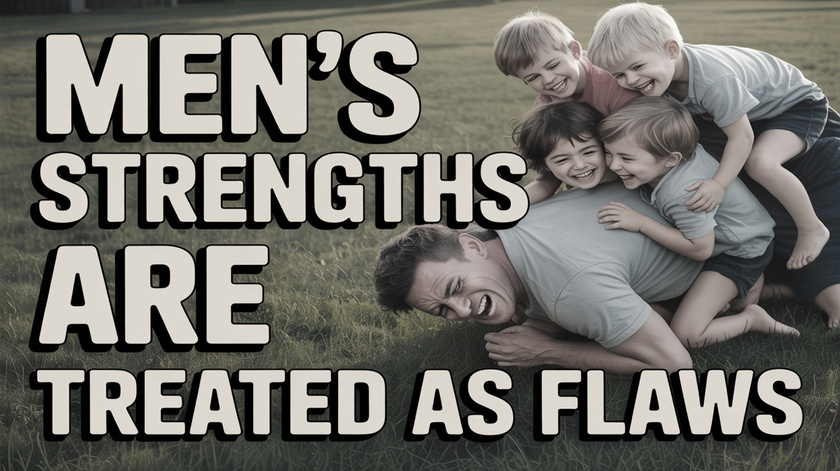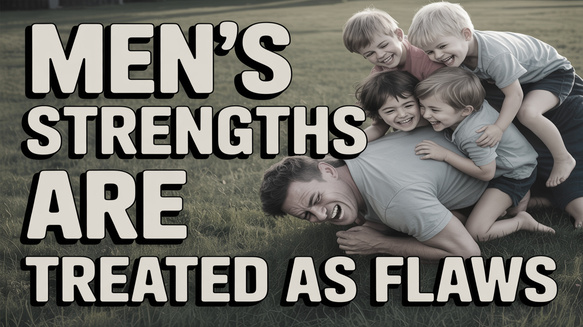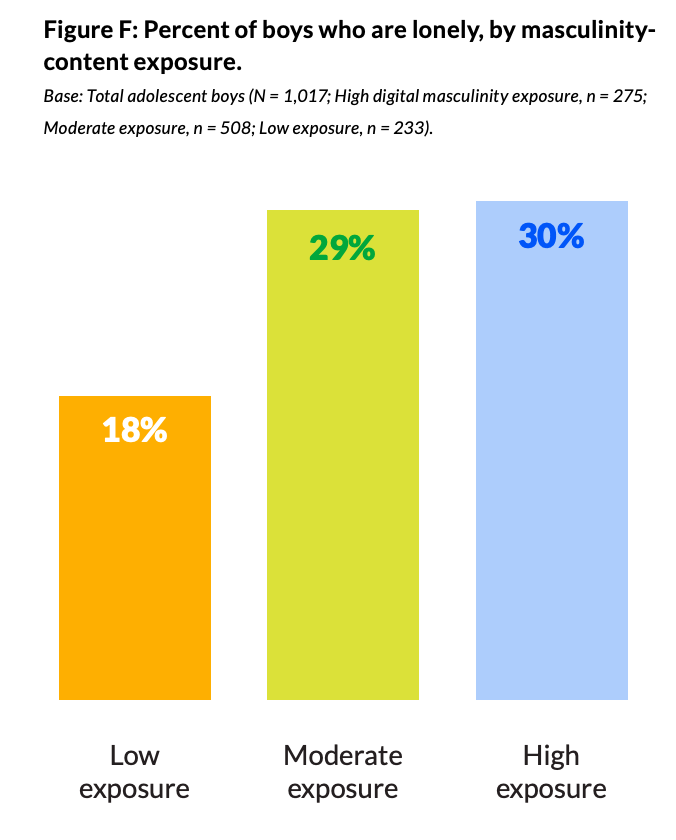101. Men always have more financial resources and thus avoid fair alimony or child support payments.
Feminists sometimes claim that men exploit the divorce system to avoid alimony or child support payments. In reality, men often face disproportionately high child support obligations, while the enforcement of alimony or spousal support can be inconsistent, with some men being burdened by support orders despite financial hardship.
102. Divorce courts impose burdens on women.
Some feminists argue that the legal system can unfairly impose emotional and financial burdens on women, such as assuming they are the primary caregivers without adequate support. However, many men face significant disadvantages, such as paying for long-term alimony or dealing with biased assumptions about their ability to care for children.
103. Men are often unfairly treated in divorce settlements and lose significant financial assets.
Some feminists argue that men use their financial advantages to manipulate divorce settlements. However, men are often required to give up substantial assets, including business interests and real estate, and pay high levels of alimony or child support, especially in long marriages or where the wife has had a lower earning potential.
104. Domestic violence is often minimized in divorce proceedings, particularly when women are the victims.
Feminists claim that domestic violence is often overlooked or minimized in divorce courts, especially when women are the victims. However, some studies suggest that men can also be victims of domestic violence, but their experiences are often underreported, leading to the perception that male abuse is less frequently acknowledged in legal proceedings.
105. Fathers and Custody Disputes
Fathers often report challenges in obtaining equal access to their children after divorce. Statistics show that mothers are awarded primary custody in the majority of cases, which some argue reflects biases in family courts that favor traditional gender roles. Fathers may face difficulties securing fair visitation rights or shared custody, even when they are equally capable and committed caregivers.
106. Divorce courts reinforce patriarchal norms by assuming women are the natural caregivers.
Feminists claim that divorce courts uphold patriarchal assumptions by assuming that women should be the primary caregivers. However, many critics argue that these assumptions can harm men, who may be unfairly denied custody or parenting time, despite being capable and willing to provide a stable home.
107. Men often use the divorce court system to exploit women financially.
Some feminists argue that men manipulate the legal system to financially exploit their ex-wives by evading support payments or dragging out divorce proceedings. While financial abuse can occur in divorce proceedings, women are also at risk of being financially exploited, particularly when courts fail to enforce child support and alimony orders consistently.
108. Divorce settlements unfairly reward stay-at-home mothers with lifelong financial support.
Feminists argue that stay-at-home mothers should be entitled to support because their work within the home is undervalued. However, critics argue that permanent alimony can be problematic, creating dependency rather than encouraging women to re-enter the workforce, and men often end up paying for long-term alimony without the possibility of modification.
109. Men’s rights activists (MRAs) misunderstand the issue by focusing too much on fathers’ rights.
Some feminists claim that MRAs focus too much on fathers' rights in the divorce system, rather than addressing the broader gender-based inequalities that women face. However, MRAs argue that both parents should be treated equally in custody decisions, and that men’s rights, including equal access to their children, deserve attention alongside women’s issues.
Broader Context
The divorce court system reflects a complicated intersection of legal, economic, and social dynamics:
Gender Biases in Custody: Despite feminist claims, studies indicate that the assumption of maternal preference in custody battles may be shifting, and many courts are recognizing the value of shared parenting.
Financial Disparities: Both men and women can be disadvantaged in financial settlements, depending on factors like child support, alimony, and asset division.
Domestic Violence: Domestic violence is a serious issue, but it affects both men and women, and there is growing recognition of the need for the legal system to address male victims of abuse.
The divorce court system has its flaws, but the complex dynamics between gender, power, and legal decisions need to be understood in a balanced way. Many advocates now call for reforms that would ensure fairer treatment for both men and women in divorce proceedings.
The issue of reproductive rights is one of the central themes in feminist discourse, but there are various claims made by feminists and critiques of those claims. Below is a breakdown of some common feminist views, their exaggerations or misrepresentations, and the counterpoints or refutations:
110. Abortion is an essential component of women’s reproductive rights.
Feminists often argue that abortion access is critical to women's autonomy and reproductive rights. However, some critics point out that reproductive rights should also include access to contraception, comprehensive healthcare, and education, with abortion being just one part of a broader conversation about family planning and maternal health.
111. Women’s reproductive rights are being systematically stripped away in the U.S. and other countries.
Many feminists argue that the erosion of abortion rights, such as the Dobbs decision in the U.S., signifies an ongoing systematic attack on women's reproductive rights. Critics argue that the debate over abortion rights often overlooks the fact that access to contraception, fertility treatments, and maternal healthcare continues to expand in many places, and that reproductive rights extend beyond abortion to include access to education, healthcare, and support systems.
112. Restrictions on abortion disproportionately affect women of color and low-income women.
Feminists claim that abortion restrictions disproportionately impact marginalized groups, such as women of color, immigrants, and those in poverty. While it's true that these women may face greater barriers to accessing abortion, critics argue that broader systemic issues like healthcare access, education, and poverty, not just abortion restrictions, contribute to these disparities.
113. The right to choose abortion is a matter of bodily autonomy.
Feminists assert that abortion is necessary for women to maintain control over their bodies and make autonomous choices about their reproductive health. However, some opponents of abortion argue that bodily autonomy must also include the rights of the unborn fetus and that there needs to be a balance between the rights of the mother and the fetus.
114. Abortion should be allowed at any time during pregnancy, for any reason.
Some feminists support unrestricted access to abortion, arguing that women should have the right to terminate a pregnancy at any stage. Critics argue that later-term abortions raise ethical concerns due to the fetal development of consciousness and viability outside the womb, suggesting that restrictions may be necessary after a certain point of fetal development.
115. Contraceptive access is a non-issue and widely available.
Feminists sometimes claim that contraception is universally accessible, thus solving the issue of unintended pregnancies. However, many critics argue that access to contraception can be inconsistent, especially for low-income women or in areas where healthcare resources are scarce. Additionally, not all women have access to the information or healthcare required to make informed choices about contraception.
116. The “War on Women” narrative regarding reproductive rights.
Many feminists assert that any attempt to restrict abortion or limit reproductive health services constitutes a "War on Women." Critics argue that this narrative oversimplifies the issue by focusing on abortion while ignoring other aspects of reproductive health, including the need for comprehensive sexual education, support for single mothers, and access to adoption services.
117. Forced childbirth is a violation of women’s rights.
Feminists claim that restricting abortion is a form of forced childbirth and violates women’s rights to personal liberty and bodily autonomy. However, some critics point out that discussions about forced childbirth should also consider the autonomy and rights of the fetus, raising questions about where the rights of the woman end and the rights of the unborn child begin.
118. The fight for reproductive rights is a fight for gender equality.
Feminists often link the fight for abortion access and reproductive rights to broader gender equality, claiming that limiting women’s reproductive choices undermines their equality in society. Critics argue that equality should include both men's and women's reproductive rights, which involve more than just abortion access—such as shared parental leave, access to healthcare, and equal opportunities for both genders in parenting and family planning.
119. Men have no right to be involved in reproductive decisions.
Feminists often argue that reproductive decisions are entirely women’s choices, dismissing the role of men in these decisions. Critics argue that men should be allowed a voice in reproductive matters, particularly regarding the decision to father a child, and that shared responsibility for reproductive choices is vital for achieving true gender equality.
Broader Context
While the feminist movement has been instrumental in advocating for women’s reproductive rights, some areas of the debate are characterized by exaggerations, one-sided narratives, or overlooked aspects:
Focus on Abortion vs. Other Reproductive Issues: The conversation often focuses heavily on abortion, while issues like birth control access, prenatal care, adoption options, and family leave policies are given less attention, despite their importance for comprehensive reproductive rights.
Access vs. Choice: Feminists advocate strongly for choice, particularly in the context of abortion, but some ignore the fact that access to reproductive healthcare services, including contraception and prenatal care, remains inconsistent and unequal, especially for disadvantaged groups.
The Role of Fathers: While reproductive rights are framed largely around women’s autonomy, some critics argue that reproductive rights should include both parents, focusing on how men’s rights and responsibilities are often overlooked in the reproductive decision-making process.
Reproductive rights are about more than just abortion; they encompass a range of issues from contraception to healthcare access, which requires an inclusive, balanced conversation that recognizes the rights of all involved, including women, men, and children.
Paternity fraud is an issue that often goes underrepresented in feminist discourse, despite its significant impact on men and families. Here’s an exploration of feminist claims about paternity fraud, their exaggerations or omissions, and the refutations or counterpoints:
120. Paternity fraud is a rare issue that affects only a small number of men.
Some feminists argue that paternity fraud is a rare problem and not something that should be prioritized in the conversation about men’s rights. However, studies have suggested that the incidence of paternity fraud (where a man is unknowingly raising a child who is not biologically his) could be higher than commonly acknowledged, with estimates suggesting that 1-3% of men in established relationships might be victims of paternity fraud. (3% would mean over 2 million men in the US are victims of paternity fraud. trg)
121. Paternity fraud victims should just accept the child as their own.
Feminists sometimes claim that men who discover they are not the biological fathers of children they’ve raised should accept their parental responsibilities without question. This dismisses the emotional and financial toll on men who may have been deceived, and ignores the ethical issues around deception, as well as the fact that men may have a right to know their biological connections to children.
122. Paternity fraud victims can always seek legal recourse for child support obligations.
Feminists argue that men can simply challenge paternity in court if they discover they have been victims of fraud. In reality, legal systems often hold men accountable for child support obligations, even in cases of paternity fraud, and some men are forced to continue paying for children they did not father because of the legal “best interest of the child” doctrine.
123. The child’s well-being should always come before the father’s rights in paternity fraud cases.
Many feminists assert that the child’s interests must always take precedence, which sometimes means that men are forced to continue financially supporting children they did not father. Critics argue that the father’s rights are also important and that legal frameworks should be more balanced, recognizing that a father has a right to know the truth about his biological connection to the child and to make decisions based on that knowledge.
124. Paternity fraud accusations are usually made by men trying to avoid responsibility.
Some feminists and others claim that men who accuse women of paternity fraud are simply trying to avoid their financial or emotional obligations. However, many men who are victims of paternity fraud have actively raised children believing them to be their own, only to discover the truth much later, often after years of emotional bonding and significant financial investment.
125. Paternity fraud cases are more about men's desire to avoid paying child support than any real harm.
Feminists sometimes argue that the primary concern in paternity fraud cases is men’s desire to avoid paying child support. While financial loss is a major issue, the emotional distress and psychological impact of being deceived into raising a child that is not biologically theirs are significant, and many victims experience a profound sense of betrayal.
126. The focus on paternity fraud detracts from the real issue of women's rights and reproductive health.
Feminists often argue that the conversation about paternity fraud distracts from important discussions on women’s reproductive rights, including access to abortion and contraception. While these issues are crucial, ignoring paternity fraud silences men’s experiences and creates a one-sided narrative that neglects the need for gender equality in family law.
127. Men should not be entitled to a paternity test if they are married and the woman claims the child is his.
Some feminists argue that men should not demand paternity tests in marriages where the woman claims a child is his, as this can undermine trust and harm the family. Critics argue that men have a fundamental right to verify biological paternity, especially in cases where they suspect fraud, as it affects their emotional and financial responsibilities.
128. The stigma of paternity fraud affects the women, not the men.
Feminists may argue that paternity fraud accusations unfairly stigmatize women, painting them as deceitful or untrustworthy. However, many men who are victims of paternity fraud face significant stigma themselves, including public humiliation and emotional damage from being deceived, and these cases also often affect the child’s relationship with both the biological father and the man who raised them.
129. Paternity fraud doesn’t harm the child as much as it harms the father.
Some feminists argue that the child’s emotional or psychological needs should outweigh the father’s claim to know his biological connection. However, it’s important to consider the long-term emotional effects on both the child and the father when paternity fraud is revealed, as the child may have developed an attachment to a man they believed was their father, only to later discover the truth, leading to confusion and potential identity crises.
Broader Context
Paternity fraud highlights a complex intersection of ethical, legal, and emotional issues that often go unaddressed in mainstream feminist discourse:
Legal and Financial Consequences: Men who discover they are victims of paternity fraud can face severe financial and legal consequences, including the continued obligation to pay child support for children they did not father. Legal frameworks often prioritize the child’s well-being over the father’s right to knowledge about his biological connection.
Bodily Autonomy and Deception: Paternity fraud raises ethical questions about bodily autonomy, deception, and the right to make informed decisions about parenthood. The decision to raise a child should ideally be based on the truth, including knowing one’s biological connection to the child.
Emotional and Psychological Impact: Victims of paternity fraud often experience profound emotional trauma and psychological consequences from the deception, including issues with trust, self-worth, and family relationships. These issues are often overlooked or dismissed in the discussion about gender equality and family law.
Paternity fraud is an important issue that affects men and families, and discussions about gender equality must consider the legal, emotional, and financial impact on all parties involved. A more balanced approach to family law would address paternity fraud alongside women’s reproductive rights, ensuring fairness for both men and women.
False accusations, especially in the context of sexual assault and domestic violence, are a highly sensitive topic, and feminist discourse often emphasizes the importance of believing and supporting victims. However, there are claims made by feminists regarding false accusations that are sometimes exaggerated or misrepresented, and the issue is often more complex than the narratives suggest. Below are common feminist claims about false accusations, followed by the refutations or counterpoints:
130. False accusations of sexual assault are rare and should not overshadow the voices of real victims.
Feminists often argue that false accusations of sexual assault are exceedingly rare and that the focus on false claims detracts from the real issue of sexual violence. While false accusations are indeed rare, studies suggest that around 2-10% of sexual assault claims could be unfounded, and this number should not be dismissed as insignificant, as false accusations can cause irreparable harm to the accused, including emotional distress, damage to reputations, and legal consequences.
131. Most women who report sexual assault are truthful, and false claims are the exception.
Feminists frequently assert that the vast majority of women who report sexual assault are truthful, and false accusations are the exception. However, the presumption that only a small number of women lie about sexual assault may overlook cases where the accusations are false, misleading, or distorted by the accuser’s own biases or motivations. The possibility of false accusations should be taken seriously, as they can harm innocent people, just as real victims of sexual assault deserve to be believed and supported.
132. Men are always the perpetrators in false accusations, and women are always the victims.
Many feminist narratives suggest that false accusations are typically made by women out of malice or revenge, targeting innocent men. In contrast, research and case studies show that false accusations can be made for various reasons, including personal grievances, attention-seeking behavior, or misunderstandings, and while men are disproportionately accused, women can also be falsely accused, especially in domestic violence or child custody disputes.
133. False accusations of sexual assault are part of a broader societal effort to undermine the #MeToo movement.
Some feminists claim that highlighting false accusations is a tactic used to discredit or undermine the #MeToo movement and the experiences of real victims. While it’s important to support victims and advocate for justice, overlooking the potential harm of false accusations can damage the credibility of the movement and lead to miscarriages of justice, especially when due process is not followed.
134. False accusations of domestic violence or sexual assault happen because of a societal bias against women’s credibility.
Feminists often argue that the primary cause of false accusations is a societal tendency to dismiss women’s claims of abuse, while the false accusations themselves are framed as a response to systemic misogyny. While it's true that women’s claims of abuse historically have been downplayed, false accusations can arise from a range of personal, social, or psychological reasons that go beyond systemic gender bias, and both false accusers and victims should be treated with due diligence in the legal system.
135. The presumption of innocence in sexual assault cases is often weaponized to protect male perpetrators.
Feminists sometimes argue that the presumption of innocence in sexual assault cases is used to shield men from responsibility, especially in cases involving false accusations. In reality, the presumption of innocence is a core tenet of criminal justice systems, and while it can protect the guilty, it also safeguards innocent individuals from wrongful punishment, underscoring the need for a fair and impartial investigation in all cases.
136. False accusations of sexual assault rarely lead to legal consequences for the accuser.
Some feminists claim that false accusers rarely face legal consequences or criminal charges, which they argue reflects a broader bias in favor of the accused. However, many jurisdictions do have laws in place that allow for criminal prosecution if someone is found to have deliberately made a false accusation (e.g., perjury or filing a false police report). The challenge is that such cases can be difficult to prove, and the legal system often does not hold false accusers accountable, leading to a perception that the consequences are too lenient.
137. The legal system is overly focused on protecting the rights of the accused, at the expense of the accuser.
Feminists often argue that the legal system, particularly in sexual assault and domestic violence cases, prioritizes the rights of the accused over the rights of the accuser, leading to a hostile environment for women to come forward with their allegations. While it is essential to support victims and ensure they have a safe space to report abuse, the justice system must balance the rights of both the accuser and the accused to ensure fairness and due process, especially when accusations are false.
138. Men who claim to be victims of false accusations are using the "men’s rights" movement to dismiss the real issue of sexual violence.
Some feminists argue that men who focus on false accusations are using the men’s rights movement to detract from the real issue of sexual violence and the #MeToo movement. However, men who are victims of false accusations also deserve legal protections, as false accusations can ruin lives, destroy reputations, and cause significant psychological harm, even if the accused man is eventually exonerated.
139. False accusations of sexual assault are always made for malicious reasons.
Many feminists claim that false accusations are intentionally malicious and are used as tools for revenge, manipulation, or other negative purposes. While some false accusations may indeed stem from intentional malice, others could be the result of misunderstandings, mental health issues, or misguided motives. It’s crucial to distinguish between intentional falsehoods and genuine mistakes to ensure fair treatment for both the accuser and the accused.
Broader Context
False accusations, particularly in the context of sexual assault, are a sensitive issue that raises important questions about justice, due process, and gender dynamics. Both accusers and the accused deserve protection, and the justice system should strive to:
Protect the Rights of the Accused and the Accuser: It’s essential to create a legal framework where both victims and the accused are treated fairly and equitably, with protections for both. False accusations harm not only the person being accused but can also undermine real victims’ credibility, which can be detrimental to the cause of fighting sexual assault.
Promote Fair Investigations: Thorough and impartial investigations are key to ensuring that justice is served, and that both false accusations and genuine claims are handled appropriately.
Ensure Accountability for False Accusations: While rare, false accusations of sexual assault or domestic violence can have significant consequences. Ensuring that false accusers face appropriate legal consequences can help deter wrongful accusations and promote fairness.
The issue of false accusations cannot be ignored, as they represent a profound injustice not only to the accused but also to the integrity of the legal system. The challenge lies in maintaining a balance between supporting genuine victims of sexual violence and ensuring that due process is upheld for those accused.
Sentencing disparity is a topic that often comes up in feminist discourse, particularly in relation to gender, race, and social class. Feminists may argue that disparities in sentencing reflect systemic biases that disproportionately affect women and marginalized groups. However, there are also several claims related to sentencing disparity that are either exaggerated or misrepresented. Below is an exploration of common feminist claims about sentencing disparity, along with counterpoints and refutations.
140. Women receive lighter sentences than men for similar crimes.
Feminists often argue that women are given more lenient sentences than men, particularly for violent crimes, due to gender biases in the criminal justice system. While studies show that women are sometimes given more lenient sentences, this is not necessarily because of gender-based discrimination but rather due to factors like the role of women in society, perceptions of women as primary caregivers, and judges' assumptions about the likelihood of reoffending. In fact, men are statistically more likely to receive harsher sentences for similar crimes, particularly for violent offenses.
141. Sentencing disparities between men and women are a form of gender bias.
Some feminists claim that the disparity in sentencing between men and women is a clear example of gender bias, where women are treated more leniently because of outdated stereotypes about their nurturing roles. However, sentencing disparity may also arise from differences in the nature of crimes committed by men versus women, as men are more likely to commit violent crimes, which typically carry more severe penalties, whereas women are more likely to commit non-violent or less serious offenses.
142. Women convicted of violent crimes are often sentenced less harshly due to their perceived maternal role.
Feminists may argue that women who commit violent crimes receive shorter sentences because they are seen as mothers or caregivers, and their maternal roles are deemed worthy of compassion or leniency. While this is sometimes true, it overlooks the reality that men, too, may have familial responsibilities, and the perception of women as caregivers could lead to perceptions of them as less dangerous or more redeemable. Additionally, this argument can be problematic as it suggests that women’s worth in the eyes of the law is linked to their roles as mothers, reinforcing patriarchal views of women's value.
143. Women are more likely to be imprisoned for less severe offenses than men.
Some feminists claim that women are more likely than men to be incarcerated for non-violent crimes, such as drug offenses or theft, and that this reflects a systemic bias against women. However, this is an oversimplification. Women are incarcerated for crimes related to poverty, addiction, and abusive relationships, but when controlling for factors like the severity of the offense and prior criminal history, men are still far more likely to be incarcerated overall, particularly for violent crimes.
144. Sentencing disparities reflect patriarchy’s criminalization of female behavior.
Feminists may argue that the criminal justice system disproportionately criminalizes women’s behavior, particularly women who engage in what society deems non-normative or “unfeminine” actions (e.g., women who commit violence). While it is true that women may be subjected to different standards of behavior than men, the larger trend in sentencing disparity is that men tend to receive harsher sentences, especially for violent crimes. Moreover, many gender-specific factors, such as mental health or socioeconomic status, can influence sentencing outcomes for both men and women.
145. Women are given shorter sentences for crimes due to empathy from the legal system.
Feminists often claim that women benefit from an “empathy gap,” where judges or juries are more sympathetic to women and, therefore, impose lighter sentences. While studies have shown some empathy toward women in certain cases, such as those involving domestic violence or self-defense, the issue of sentencing disparity is more complex. In many cases, male defendants also receive empathy, particularly in cases where they may be victims of childhood abuse or mental illness. The disparity is influenced by many factors, including the crime, the criminal's history, and the circumstances surrounding the offense.
146. Black women are sentenced more harshly than white women, exposing racial bias in the justice system.
Feminists often highlight the intersectional impact of race and gender, arguing that Black women face harsher sentences than white women due to racial and gender biases. While racial bias in sentencing is well-documented, it is important to note that Black men are far more likely to receive harsher sentences than white men, and race-based disparities affect both genders. Studies have shown that Black men receive disproportionately long sentences, especially in drug-related offenses, and while Black women do face challenges in the justice system, the racial disparity in sentencing is most pronounced among men.
147. Sentencing disparity between men and women is a result of societal sexism, where women are viewed as less threatening.
Feminists claim that sentencing disparities exist because society views women as less dangerous or violent, and this assumption affects the way the criminal justice system treats them. While women may be perceived as less threatening, this view is often influenced by gender stereotypes that underestimate women's capacity for violence. However, when women commit violent crimes, particularly in cases involving domestic violence or self-defense, they can still face harsh sentences depending on the specifics of the case. This claim overlooks the broader trends where men, especially men of color, tend to receive significantly harsher sentences for similar crimes.
148. Sentencing disparities are part of the patriarchal structure that diminishes women's agency.
Some feminists argue that sentencing disparities reflect how patriarchal structures undermine women’s autonomy, with the justice system favoring men and excusing women’s criminal behavior. While there are disparities in how men and women are treated in the criminal justice system, the overall trend in sentencing data shows that men are more likely to receive longer sentences for violent crimes, and systemic issues such as socioeconomic status, prior criminal history, and the nature of the offense are more significant than gender alone in determining sentencing outcomes.
149. The legal system discriminates against women by sentencing them too harshly for “women’s crimes” like abortion or infanticide.
Some feminist arguments focus on the criminalization of so-called "women’s crimes," such as abortion (in places where it is illegal) or infanticide, claiming that women are often punished more severely than men for these crimes. While it is true that the criminal justice system historically has treated crimes related to women’s reproductive rights and motherhood in a gendered manner, the sentencing disparity in these cases is less about systemic bias and more about the legal status of these actions. In regions where abortion is illegal or infanticide is criminalized, women face penalties that may not be proportionate to the crime, but these are often political or cultural issues rather than inherent gender bias in sentencing.
Broader Context
While sentencing disparity is a real issue, particularly when considering the intersection of gender, race, and socioeconomic factors, the overall evidence often suggests that men, especially those from marginalized communities, face harsher sentences than women for similar offenses. The criminal justice system’s approach to sentencing is influenced by numerous factors, including:
Gender Bias in Different Directions: While women may sometimes receive lighter sentences for violent crimes, men are generally sentenced more harshly, especially for violent crimes and offenses involving higher levels of aggression.
Impact of Intersectionality: Racial and class-based disparities are deeply entrenched in sentencing, and while gender plays a role, the intersection of race, gender, and class often determines the severity of sentences.
Stereotypes and Social Perceptions: Gendered perceptions, such as the idea of women as "nurturers" or men as "more dangerous," influence how sentences are imposed, but this is only one factor among many that affect sentencing outcomes.
150. Patriarchy causes men to oppress women systematically.
The "patriarchy" narrative assumes men as a group conspire to maintain dominance over women. Historical and sociological evidence suggests that most societal structures are built to protect and support women and children, with men often taking the most dangerous and sacrificial roles.























